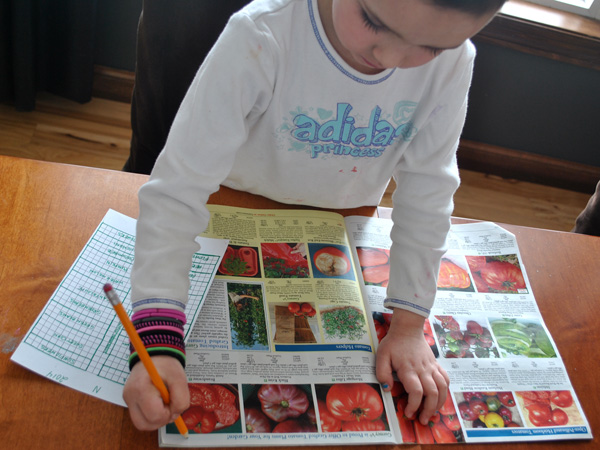Planting a vegetable garden, I am good at. Planning said vegetable garden, I am not good at. Writing this blog has been a bit agonizing as it forces me to sit down and make a plan, rather than winging it, which I am really good at. I am more impulsive and not always logical when deciding where to plant the garden veggies. I guess it’s time that I take the recommended approach and sketch out my plans.
To begin, I sorted through the craft closet to find graph paper, pencil and eraser. With the list of vegetables my family and I drafted last week, I sat down and drew a rectangle. I reminisced on my layout last year and began drawing rectangles to show where I want the vegetables this year. A few rearrangements later, I had a final plan that took me about fifteen minutes. Some of you are going to plan according to every square inch of the garden and use colorful pencils and a ruler, but my brain doesn’t work that way; I just estimate the space and feel good with a general layout.
Before you draw your first rectangle (or whatever shape your garden will be), I have listed some additional pointers to go along with the two previous blog posts.
Rotate – Don’t plant your vegetables in the same spot every year! It’s a no, no! Rotating vegetables keeps soil borne disease and insect problems in check. For example, if you plant tomatoes in the same spot every year, you will have a heck of a time keeping the plants healthy and the horn worms away. Soil is the main ingredient to your garden success and it must be respected. We don’t start each year with new soil, we must work to improve the soil year after year and rotating vegetables is one way to keep the soil healthy.
It is helpful to know the most common vegetable families. Simply rotate according to family each year. They are:
1. Solanum –tomato, potato, pepper and eggplant
2. Crurbit – melons, squash, and cucumbers
3. Cruciferous – broccoli, cauliflower, cabbage, and Brussels sprouts
4. Alliaum –onion, garlic, and leeks
Plant according to nutrient needs – There are vegetables that require more plant nutrition than others, gardeners refer to them as heavy feeders. These include: cabbage, tomatoes, sweet corn, beets, watermelon, carrots, onions, celery and potatoes. For healthy plant growth and development, you will have to supplement crop nutrients while they are growing. When I fertilize, it’s nice to have these veggies planted close together, it allows me to work efficiently.
Space saving, companion planting – Plant short season crops such as radishes and beets between long season crops of tomatoes, peppers and broccoli. The season plants will be ready to harvest just about the time the long season planted need the extra space. There is a lot of information out there on companion planting, for the sake of keeping this post short, I will revisit companion planting in another post soon.
Perennial vegetables – Rhubarb, asparagus, and strawberries are perennial crops (they come back year after year). You don’t want to work around them all season, so it’s best to put them in one area or to one side of the garden. For me, space is not an issue, so I have a perennial vegetable garden in a separate location from all the other vegetables. Might I also add here that the combination of rhubarb and strawberries makes for an unbelievable pie!
Early maturing – Plant spinach, lettuce, radishes, peas, green onions, and other early maturing vegetables together. These will be harvested first, leaving a large open space for a successive planting. It’s a smart way to get more out of your garden space. In my garden, I follow up with green beans after harvesting peas and onions.
Tall vegetables – Consider planting sweet corn and trellised vegetables, like pole beans along the north side of the garden so they will not shade the rest of the garden. Because I rotate the vegetables around my rectangle of a garden, the sweet corn isn’t always on the north side. When this happens, I plant veggies that can handle the shade of tall sweet corn stalks.
Space saving, go vertical – If you are short on space, go vertical. I can’t speak from personal experience, because I haven’t gardened with trellises. However, I have seen beautiful, successful gardens with trellises. With a little hardware, the extra space made available from vertical gardening will give you a larger garden, and will help reduce disease and make harvest easier. Maybe I should try it!
Plant flowers – For fun and beauty, I plant flowers on the edge of the garden. Why not? It’s nice to have cut flowers to bring in and brighten the kitchen table.
The more you garden, the more you will begin to have preference on how you want to lay out the garden. The best way to learn is to “learn by doing.” Get some paper and draw a few rectangles, you will be glad you did. I am feeling pretty confident right now; this garden on paper is weed free.
I am happy to be gardening with you.









Happy to see the sunflowers!